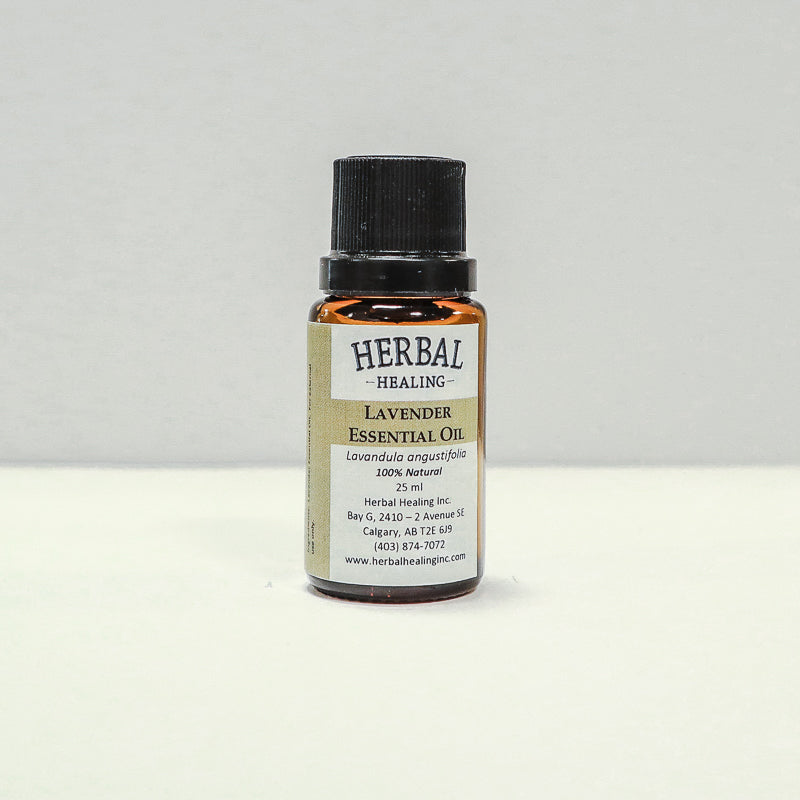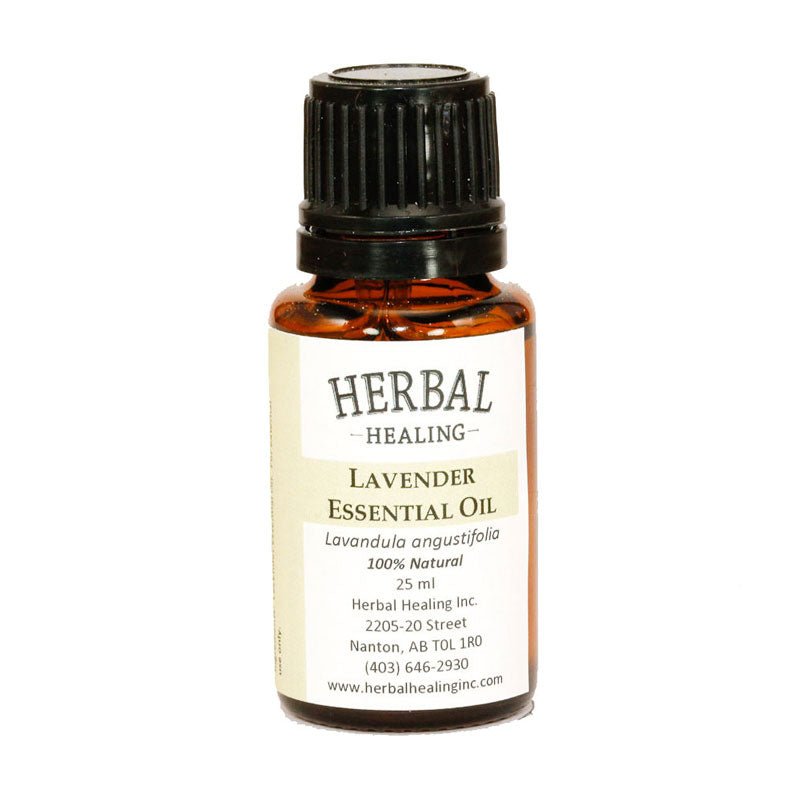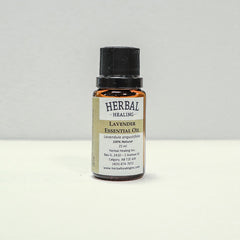



Lavender (Lavandula angustifolia) Essential Oil
- $32.95 CAD
- $32.95 CAD
- Unit price
- per
25 ml
Couldn't load pickup availability
Botanical Name: Lavandula angustifolia
Plant Part: Flowers
Description: Lavender is an evergreen woody shrub, up to 1 meter tall, with pale green, narrow linear leaves and violet blue flowers.
Colour: Pale yellow to yellow liquid.
Common Uses: Properties of Lavender Essential Oil include analgesic, anti-convulsive, anti-depressant, anti-phlogistic, antirheumatic, antiseptic, antispasmodic, antiviral, bactericide, carminative, cholagogue, cicatrisant, cordial, cytophylactic, decongestant, deodorant, and as a diuretic. Herbalists regard Lavender as the most useful and versatile essential oil for therapeutic purposes. Lavender is the essential oil most commonly associated with burns and healing of the skin. It also has antiseptic and analgesic properties which will ease the pain of a burn and prevent infection. It also has cytophylactic properties that promote rapid healing and help reduce scarring. The scent of Lavender is said to have a calming effect on the body and it can be used to reduce anxiety, stress and promote sleep. Lavender is a very therapeutic grade comparable in status to the better known Lavender Population. The different soil, temperature, precipitation, etc. contributes to some subtle changes in scent, the greatest advantage being for more sophisticated label claims.
Consistency: Thin
Note: Top
Strength of Aroma: Strong
Blends Well With: Bay, Bergamot, Chamomile, Citronella, Clary Sage, Geranium, Jasmine, Lemon, Mandarin, Orange, Palmarosa, Patchouli, Pine, Thyme, Rosemary, Rosewood and Ylang-ylang.
Aromatic Scent: Lavender Essential Oil has a sharper more campharaceous aroma preferred by some.
History: Lavender is adapted to living in a dry climate and is native to the western half of the Mediterranean, reaching altitudes of up to 1800 meters. It is believed that the Romans and the Benedictine monks subsequently introduced it to rest of Europe.
Caution: None known. Lavender Essential Oil is non-toxic, non-irritating and non-sensitizing.
25 ml
RELATED PRODUCTS
- Choosing a selection results in a full page refresh.



